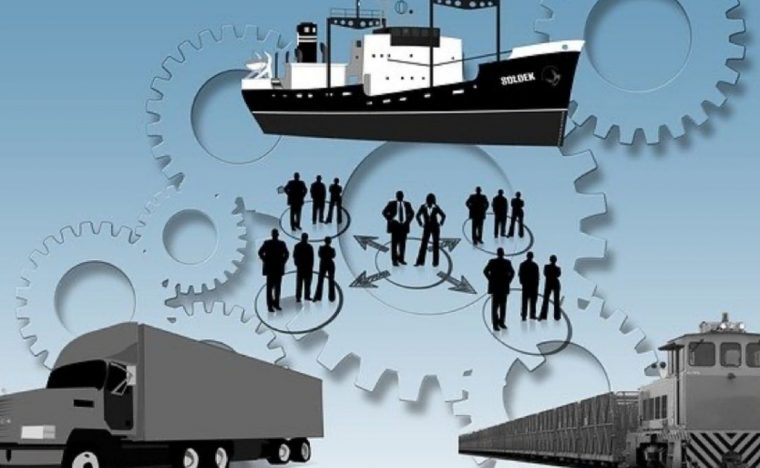What Is Agility In Warehouse Management?
The concept of agility was introduced by Goldman et al. in 1995. It means “readiness to change”, from a business perspective, agility is defined as a strategy that is more responsive in a volatile market place, where this strategy is totally demand-driven. It also refers to the capability of a firm or enterprise to operate profitably in a competitive environment of continual and unpredictable changes in the market and/or customer demands.
And according to Christopher (2000), we have now entered the era of “New Competition” where the turbulent and unpredictable markets are becoming the norm as life cycles shrink and competitive forces create additional uncertainty. As consumers buying patterns are changing at a very rapid pace, so do the whole supply chain management changes. The fundamental drivers of this strategy are Speed, Cost, and Efficiency.
What Does Agile Warehouse Management Mean?
Warehouse management is one facet of supply chain management. It affects order fulfillment, storage, inventory management, shipping, and distribution. Warehouse management with agility as it’s approach basically refers to the use of responsiveness, competency, flexibility, and quickness to manage and control the day to day operations.
Agility in warehouse management plays a key part in ensuring that the company meets its productivity goals. It adds efficiency, consistency, and quality control to the process by helping you move goods through your warehouse at maximum speed, improving every stage of the fulfillment process.
Highly Flexible
Agility in warehouse management is built to be highly flexible for the purpose of being able to quickly adapt to changing situations. This methodology is considered important for organizations that want to be able to adapt to unanticipated external economic changes, such as economic swings, changes in technology, or changes to customer demand.
This sort of warehouse management focuses on flexibility and adaptability rather than on reliability and predictability which the conventional warehousing usually practices. This agility in warehouse management becomes the priority, mostly preferred strategy in this present era. To be truly agile in warehouse management, you need agility across all levels of your operations, both strategically and tactically in terms of overall execution.
As today’s market is extremely competitive, warehouse management is crucial to your business operations. Nowadays, customers have increasingly high expectations and retailers have the ability to enforce penalties if service is not met to their satisfaction. So in order to create value for your customers and avoid fines, you must remain agile and flexible enough to avoid these concerns.
3PL Warehouse
Your 3PL providers must also be flexible in meeting the increasingly demanding expectations of consumers today. In warehousing, if volume starts increasing unexpectedly, your operations need to ensure that it will not result in penalty charges for your customers or falling behind on service commitments. The buildup in the warehouse streams all the way down to the end consumer and it is guaranteed that any complaints filed will make their way back to your organization.
Warehouse management consists of two pivot points: – The major pivot and minor pivot. The major pivot is a complex point that can include introducing new product lines, complying with new, more stringent regulations, or a facility or technology infrastructure change. While the minor pivot is a much simpler point that can involve reacting to unexpected volumes and forecasts.
How To Achieve Agile Warehouse Management?
As said, agility in warehouse management is an enterprise-wide response to an increasingly competitive and changing business environment, and it must be based on four cardinal principles (Goldman et al. 1995):
Production Infrastructure (Enrich the Customer)
Deals with producing high-quality, high-performance, customer configured goods, and services. Having the right assortment of technology, tools, and systems in place is the most direct approach to achieving this end result.
Market Infrastructure (Master Change and Uncertainty)
The ability of the enterprise to identify opportunities, deliver, upgrade products, enrich services, and expand. Using business intelligence software, which aggregates data and put it into easy to understand visual displays, will provide your operators and warehouse employees with actionable insights to deal with unforeseen disruptions.
People Infrastructure (Leverage Human Resources)
Having high levels of employee engagement. Engage your employees at all levels by involving them in process improvement activities, which yields high engagement and makes operations more efficient, reduces waste, and provides agility from a cost perspective, leveraging the best ideas in the organization.
Information Infrastructure (Cooperate to Compete)
Making sure you stay on top of advancements is vital to remaining competitive in the market. There is no one-size-fits-all solution to enabling truly agile warehouse management. This also deals with information flow within and outside the enterprise. It can be measured by the ability to capture, manage, and share structured information to support the area of interest.
The key idea of agility as a methodology is to combine all infrastructures and their corresponding parameters to determine the overall agility of the enterprise.
Developing agile warehouse management is not the option available in the market but a necessity for the success of the company. This concept has been recognized, as a solution to increase the responsiveness of an entrepreneur to a more changing environment. Today’s warehouse management compete on various strategies, but the most commonly used one is the agile strategy. Because this strategy anticipates demand fluctuations in volatile market demand patterns.
Ship Fortress LLC | Best Reefer Truckload | 3PL Warehouse Facility & Logistics in Milwaukee
Ship Fortress in Milwaukee understands every business has its own specific requirements. We customize and create solutions to meet each business unique needs. We truly do provide our clients with
- cost-effective delivery services
- flexible
- high-quality logistics solutions & LTL services
As a seamless extension of our clients’ business, we have a passion for exceptional customer service. Our experience and expertise allow us to provide multiple layers of client support services to propel businesses forward. Contact us for a FREE Quote.





